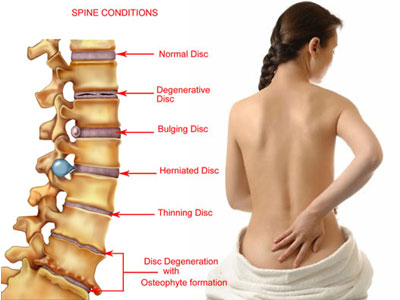10 Common Spine Issues That Can Happen to Anyone

Understanding Common Spine Issues and How to Alleviate Back Pain
Many people think back pain only affects older adults, but this isn’t true. Back pain is a common health issue in America, affecting over 30 million people of all ages every year. It’s the leading cause of disability worldwide and the top reason people miss work.
Back pain can result from various spine problems. Here are 10 common spine issues and tips on how to manage them:
1. Herniated Disc
The spine is composed of bones called vertebrae, with discs acting as cushions between them. A herniated disc occurs when one of these cushions shifts and bulges out of its normal position. This can press on spinal nerves, causing symptoms like:
- Back pain
- Numbness
- Pain in the arms and legs
- Tingling sensations
- Muscle weakness
Herniated discs are most common in the lower back but can also occur in the upper back. To reduce the risk, maintain a healthy weight, practice good posture, and exercise regularly. If you experience symptoms, consult a doctor.
2. Muscle Strain
Muscle strain in the back can happen due to overuse, stress, or poor posture. This results in pain and tightness in the neck and back. To prevent muscle strain, strengthen your back muscles with exercise, maintain a healthy weight, and stretch before physical activities.
3. Scoliosis
Scoliosis is an abnormal curvature of the spine affecting around 9 million Americans. It often develops during childhood or adolescence. Signs of scoliosis include:
- Uneven shoulders
- Asymmetrical rib cage height
- Hips that are higher on one side
- A body lean to one side
- Head not centered above the pelvis
Scoliosis can cause back pain and pinched nerves. Treatment options include bracing, physical therapy, and surgery, depending on the severity and age of the patient.
4. Whiplash
Whiplash is a neck injury caused by sudden, jerky head movements, often from car accidents. Symptoms, which may appear 24 hours after the incident, include:
- Neck pain
- Stiffness
- Headaches
- Lower back pain
- Fatigue
- Dizziness
- Difficulty concentrating
Treat whiplash with pain relievers, ice, massage, physical therapy, and heating pads.
5. Osteoporosis
Osteoporosis weakens bones due to decreased bone mass, making them brittle and prone to fractures. This can lead to collapsed vertebrae and a hunched posture. To strengthen bones, eat a diet rich in calcium and vitamin D and engage in weight-bearing exercises like walking and lifting weights.
6. Sciatica
Sciatica involves pain, numbness, or weakness along the sciatic nerve, which runs from the lower back down the leg. This can result from a herniated disc, bone spur, or spinal narrowing. Treatment options include physical therapy, steroid injections, chiropractic care, and medications like pain relievers and muscle relaxants.
7. Compression Fracture
A compression fracture, or collapsed vertebra, occurs when the vertebrae crack due to weakened bones, often from osteoporosis. Other risk factors include bone cancer, smoking, being underweight, and being a woman over 50. Pain medications and physical therapy can help manage the pain.
8. Spinal Myelopathy
Spinal myelopathy is damage to the spinal cord from age-related degeneration. Symptoms include pain, numbness in hands and feet, muscle weakness, loss of balance, and tingling. Surgery can help prevent the condition from worsening.
9. Osteoarthritis
Osteoarthritis is the inflammation of joints, which can affect the spine. This leads to deterioration of the spine’s joints and cartilage, causing pain, inflammation, bone spurs, and nerve damage. Managing symptoms includes maintaining a healthy weight, exercising, acupuncture, and massage.
10. Spondylolisthesis
Spondylolisthesis occurs when a vertebra slips forward over the one below it, causing severe pain and potential damage to the spinal cord. This can result in numbness, loss of bladder control, and difficulty walking. Treatment options include physical therapy, weight loss, pain medications, and core strengthening exercises, with surgery for severe cases.
By understanding these common spine issues and their treatments, you can take steps to alleviate back pain and improve your overall spinal health.
